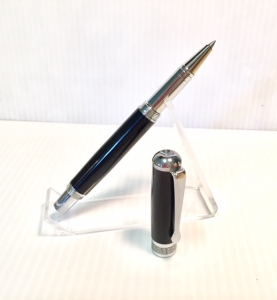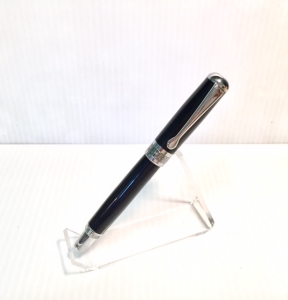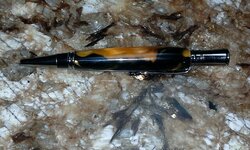You are using an out of date browser. It may not display this or other websites correctly.
You should upgrade or use an alternative browser.
You should upgrade or use an alternative browser.
building a buffing center
- Thread starter LOIBLB
- Start date
Signed-In Members Don't See This Ad
Signed-In Members Don't See This Ad
mecompco
Member
I'm not sure a buffer will take out those scratches. Are you using MM pads and sanding laterally as well as radially? I like my barrels to be scratch free before taking them to the buffer. I use PSI's three wheel system, which I understand is a rip-off of Beal's system. I keep it permanently mounted on my HF lathe.
Regards,
Michael
Regards,
Michael
stuckinohio
Member
I you want the ultimate buffing system, check out this link. http://content.penturners.org/library/tools_and_jigs/buffing_system.pdf
Tony has taken buffing further than Beall. He uses 4 grits of abrasive/polish instead of just two.
With that said, I use the Beall system and am happy with it. The Beall Tool Company
Tony has taken buffing further than Beall. He uses 4 grits of abrasive/polish instead of just two.
With that said, I use the Beall system and am happy with it. The Beall Tool Company
JimB
Member
What is your current sanding and polishing process? That may be where your problem is.
A buffing system can be anything from a do it yourself system using HF buffs to buying a complete system from places like Woodcraft, Rockler, CSUSA, PSI as well as many other places. It really depends on what you want and what your budget is.
A buffing system can be anything from a do it yourself system using HF buffs to buying a complete system from places like Woodcraft, Rockler, CSUSA, PSI as well as many other places. It really depends on what you want and what your budget is.
KCW
Member
I agree with Michael on this. When I started, I thought I could buff out larger scratches also, and would spend far too long at the buffer, trying to get a decent outcome. I finally decided to get my sanding process down, and it saved me so much time and effort. But to answer your question, you can buy a buffing system almost anywhere pen parts are sold, or you can make one yourself, like Tony L did http://www.penturners.org/forum/f28/my-alternative-mm-wet-sanding-135154/
Edit- Guess I was a little slow at typing this out.
Edit- Guess I was a little slow at typing this out.
terry q
Member
I don't use a buffing wheel for my acrylics. I use this sanding paper from Vinces. SIASOFT PAPER AND FILM BACKED ABRASIVE « www.VincesWoodNWonders.com I sand up to 1500 then use Novus 1&2 for scratch removal. As previously stated you need to sand laterally as well as radially.
I don't have a buffing system but ditto on the sanding laterally. I start at usually 180 or 240 and go up to 12,000 with the Micro Mesh pads. My lathe is capable of running in reverse so I usually sand at low rpm (around 500) in "reverse" stopping the lathe after each grit and sanding the blank(s) laterally while manually turning the blank. Then just to be on the safe side, I take my work light and use a "raking light" in multiple directions to make sure I don't see any visible scratches before moving up to the next grit. Once I reach 12,000 grit I will either use Novus or Meguiar's Plast-X.
Black is extremely hard to get perfectly scratch-free but with patience you can do it!
Black is extremely hard to get perfectly scratch-free but with patience you can do it!
liljohn1368
Member
This is a solid black pen that I started wet sanding with 600 grit sandpaper then to 800 grit. Then move to micro-mesh pads. thats the only buffing system that I have. Another thing is tool control. that keeps the deep scratches out.

View in Gallery

View in Gallery

View in Gallery

View in Gallery
Last edited:
Skie_M
Member
Sanding laterally between the grits is the major key you are missing for your success ....
Finishing the process with Plast-X or another polishing compound would do the rest.
Also, using Turtle Wax or another wax compound at the end helps, I hear, with preventing fingerprints from showing up quite so much...
Finishing the process with Plast-X or another polishing compound would do the rest.
Also, using Turtle Wax or another wax compound at the end helps, I hear, with preventing fingerprints from showing up quite so much...

